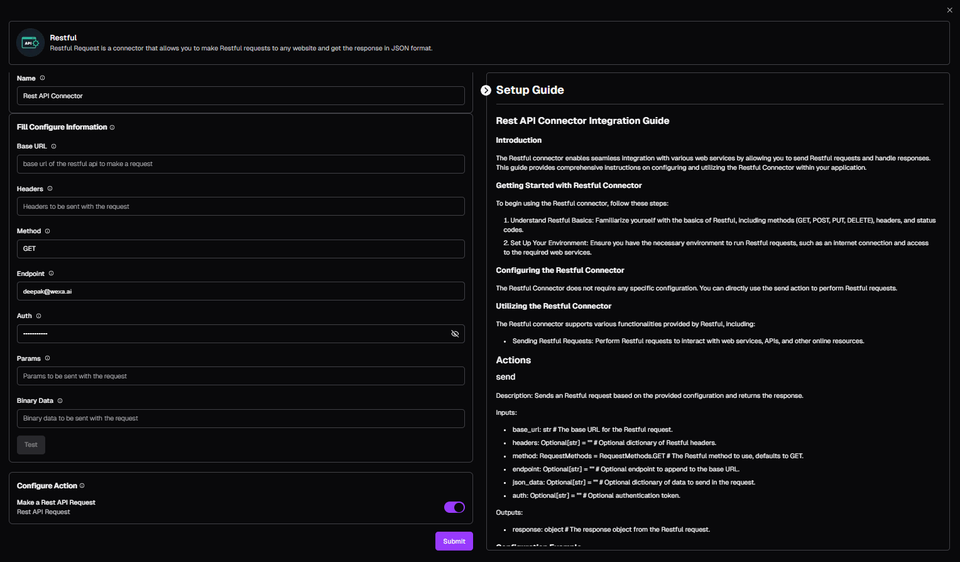Redis Connector Integration Guide

Introduction
The Redis Connector enables seamless integration with a Redis database, allowing users to perform various operations such as creating, retrieving, and deleting key-value pairs. This guide provides comprehensive instructions on configuring and utilizing the Redis Connector within your application.
Getting Started with Redis
To begin using the Redis Connector, follow these steps:
- Connection Details: Provide the host, port, and password, db to establish a connection with the Redis database.
Configuring the Redis Connector
Once you have your Redis server and client library set up, you can configure the Redis Connector with the following settings:
host: The hostname or IP address of your Redis server.port: The port number on which your Redis server is running.password: The password for authenticating with your Redis server (if required).db: The Redis database number to connect to (default is "0").
Utilizing the Redis Connector
The Redis Connector supports various functionalities provided by the Redis database, including:
Creating Key-Value Pairs
- Create Key-Value Pair: Store a key-value pair in the Redis database.
Retrieving Key-Value Pairs
- Get Key-Value Pair: Retrieve the value associated with a specified key from the Redis database.
Deleting Key-Value Pairs
- Delete Key-Value Pair: Remove a key-value pair from the Redis database.
Actions
create
Description: Stores a key-value pair in the Redis database.
Inputs:
key: str- The key to be stored.
value: str- The value to be associated with the key.
Outputs:
message: str- Confirmation message indicating the result of the operation.
delete
Description: Deletes a key-value pair from the Redis database.
Inputs:
key: str- The key to be deleted.
Outputs:
message: str- Confirmation message indicating the result of the operation.
get
Description: Retrieves the value associated with a specified key from the Redis database.
Inputs:
key: str- The key whose value is to be retrieved.
Outputs:
key: str- The key that was retrieved.
value: any- The value associated with the key.
Best Practices
- Connection Management: Ensure proper management of Redis connections to avoid connection leaks and ensure optimal performance.
- Error Handling: Implement robust error handling mechanisms to gracefully handle errors encountered during Redis operations.
- Security: Securely manage and protect your Redis credentials to prevent unauthorized access to your Redis database.
Conclusion
In conclusion, the Redis Connector offers a powerful solution for interacting with a Redis database through seamless integration. By leveraging the capabilities of Redis, developers can build sophisticated data storage and retrieval workflows to streamline data management and improve productivity. With proper configuration and utilization of the Redis Connector, users can harness the full potential of Redis to manage key-value pairs effectively.
